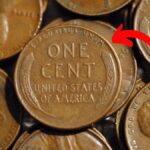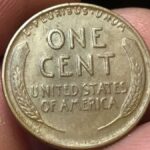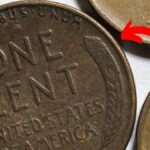A penny may seem insignificant, but in the world of coin collecting, some can be worth millions. Among these treasures is the Lincoln Wheat Penny, with one rare version valued at $2.7 million. What makes this coin so special? How can you identify it, and is it possible to find one in circulation today? Let’s dive into the fascinating story of this remarkable penny.
The History of the Lincoln Wheat Penny
The Lincoln Wheat Penny, also known as the Wheat Cent, was introduced in 1909 to commemorate the 100th anniversary of Abraham Lincoln’s birth. It was the first U.S. coin to feature a real person’s likeness, breaking away from the traditional depiction of Liberty.
- Front Design: Features Abraham Lincoln’s profile, along with the phrases “In God We Trust” and “Liberty.”
- Back Design: Displays two wheat stalks framing the words “One Cent” and “United States of America,” symbolizing America’s agricultural roots.
The design was created by Victor David Brenner, a sculptor and engraver, whose initials (VDB) appeared on the original 1909 coins.
Why Is This Lincoln Wheat Penny So Valuable?
1. Rarity
The Lincoln Wheat Penny was minted from 1909 to 1958, with billions produced. However, the $2.7 million valuation applies to a specific version of the coin, the 1943 copper-alloy penny.
During World War II, the U.S. Mint switched from copper to zinc-coated steel for pennies to conserve copper for war supplies. However, a few copper pennies were mistakenly struck in 1943, making them incredibly rare.
2. Historical Significance
The 1943 copper penny represents a unique moment in history when resources were redirected for wartime efforts. This adds to its appeal for collectors.
3. Condition and Grading
The condition of a coin significantly affects its value. Coins graded as “mint state” (perfect condition) or with unique errors are worth far more. The $2.7 million penny is in exceptional condition, enhancing its worth.
The $2.7 Million Lincoln Wheat Penny
One of the most famous examples of the 1943 copper penny sold at auction for $2.7 million. This coin’s rarity, historical importance, and pristine condition contributed to its record-breaking price. It is considered one of the “Holy Grails” of coin collecting.
How to Identify a Rare Lincoln Wheat Penny
1. Check the Year
The 1943 copper penny is one of the rarest Lincoln Wheat Pennies. Regular 1943 pennies were made of steel and appear silver-colored.
2. Test the Material
A 1943 penny made of copper will not stick to a magnet, unlike steel pennies. This is a quick way to identify a potential rarity.
3. Look for Mint Marks
Mint marks indicate where a coin was produced. The 1943 copper penny can have no mint mark (Philadelphia), a “D” (Denver), or an “S” (San Francisco).
4. Inspect for Errors
Coins with unique errors, such as double stamping or off-center designs, are highly valuable.
Can You Still Find the $2.7 Million Penny in Circulation?
Surprisingly, yes! The 1943 copper penny is so rare that most people don’t realize its value. Some of these coins may still be hiding in old piggy banks, jars, or loose change. While the chances of finding one are slim, it’s not impossible.
The Appeal of Coin Collecting
Coin collecting, or numismatics, is a hobby that combines history, art, and discovery. For collectors, finding a rare coin like the 1943 copper penny is the ultimate thrill. Even common Lincoln Wheat Pennies hold historical significance and can be worth more than their face value in good condition.
Tips for Protecting and Selling Rare Coins
1. Avoid Cleaning
Never clean a coin, as this can damage its surface and reduce its value.
2. Store Properly
Use coin holders, albums, or protective cases to prevent scratches and tarnishing.
3. Get Professional Grading
Professional grading services like PCGS or NGC can authenticate and grade your coin, ensuring an accurate valuation.
4. Consult Experts
Reach out to reputable coin dealers or auction houses to sell or evaluate rare coins.
Conclusion: The Hunt for the $2.7 Million Penny
The Lincoln Wheat Penny valued at $2.7 million is a testament to the extraordinary worth that rarity and history can bestow on an everyday object. While most Wheat Pennies are worth only a few cents, the possibility of finding a rare version like the 1943 copper penny keeps collectors searching.
So, the next time you come across a penny, take a closer look—it might just be the key to a small fortune!
Disclaimer: The prices mentioned for rare coins, including the 1943 bronze Lincoln Wheat Penny, are not guaranteed and may not be entirely accurate due to market fluctuations and varying appraisals.







